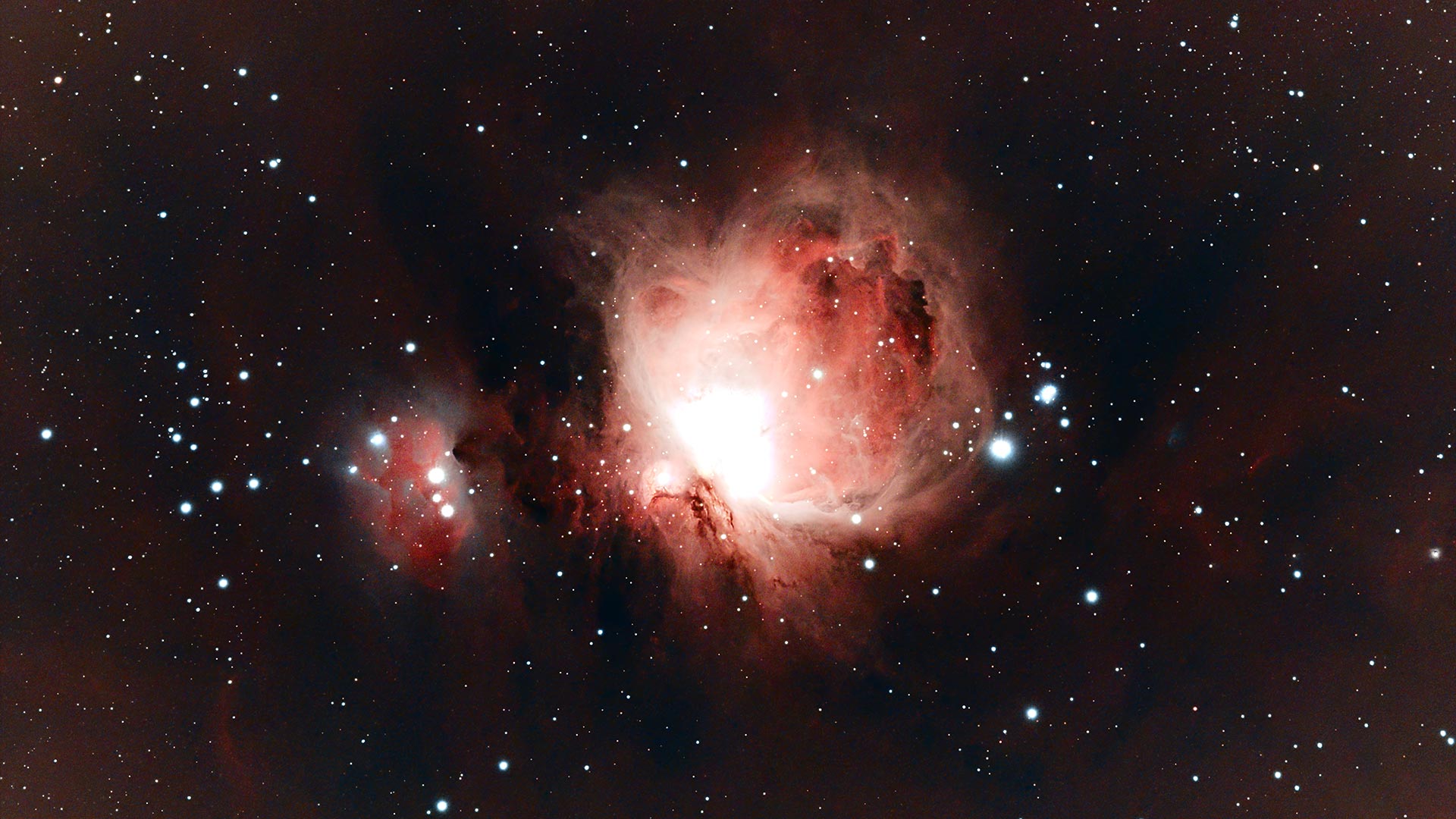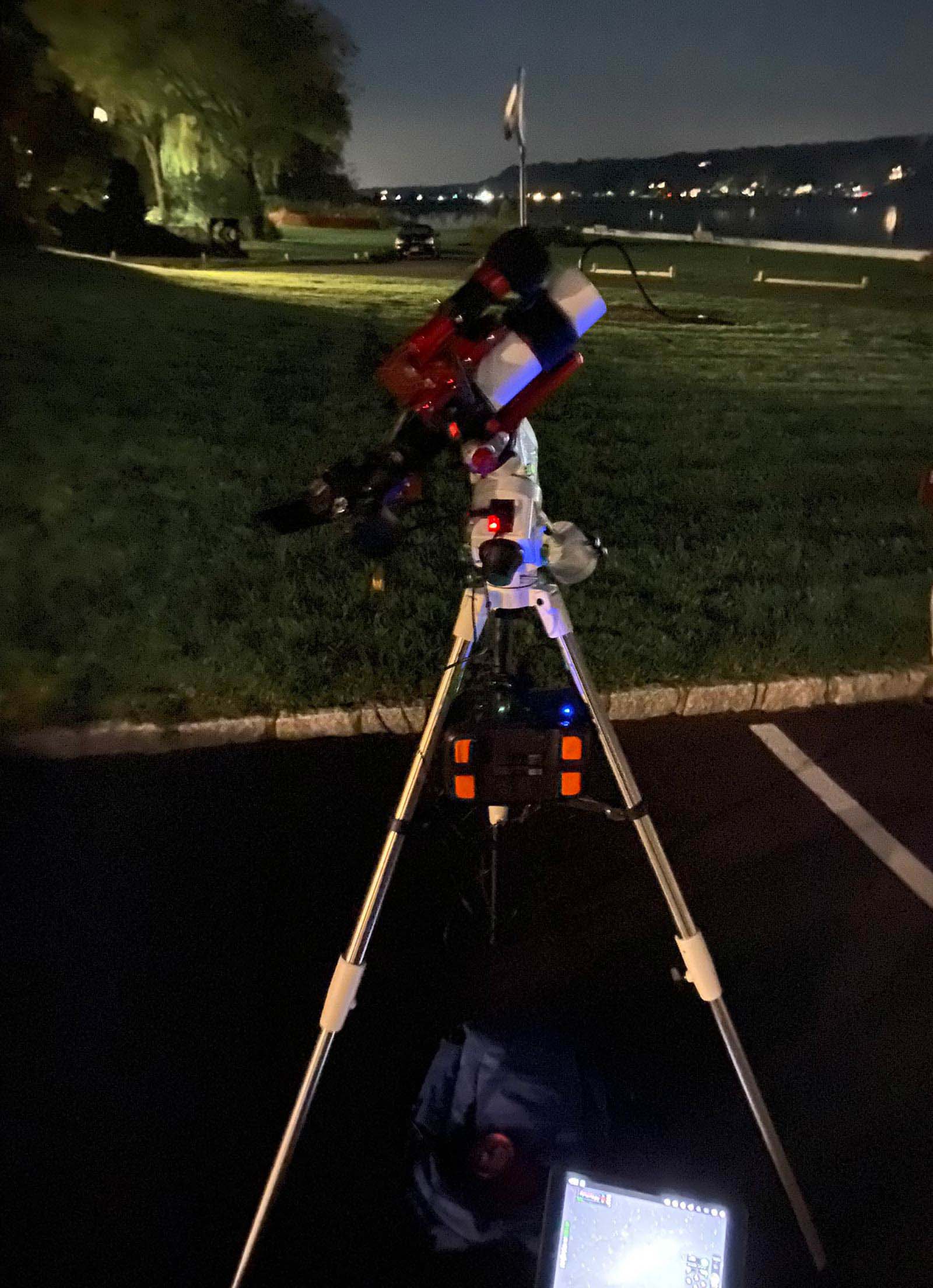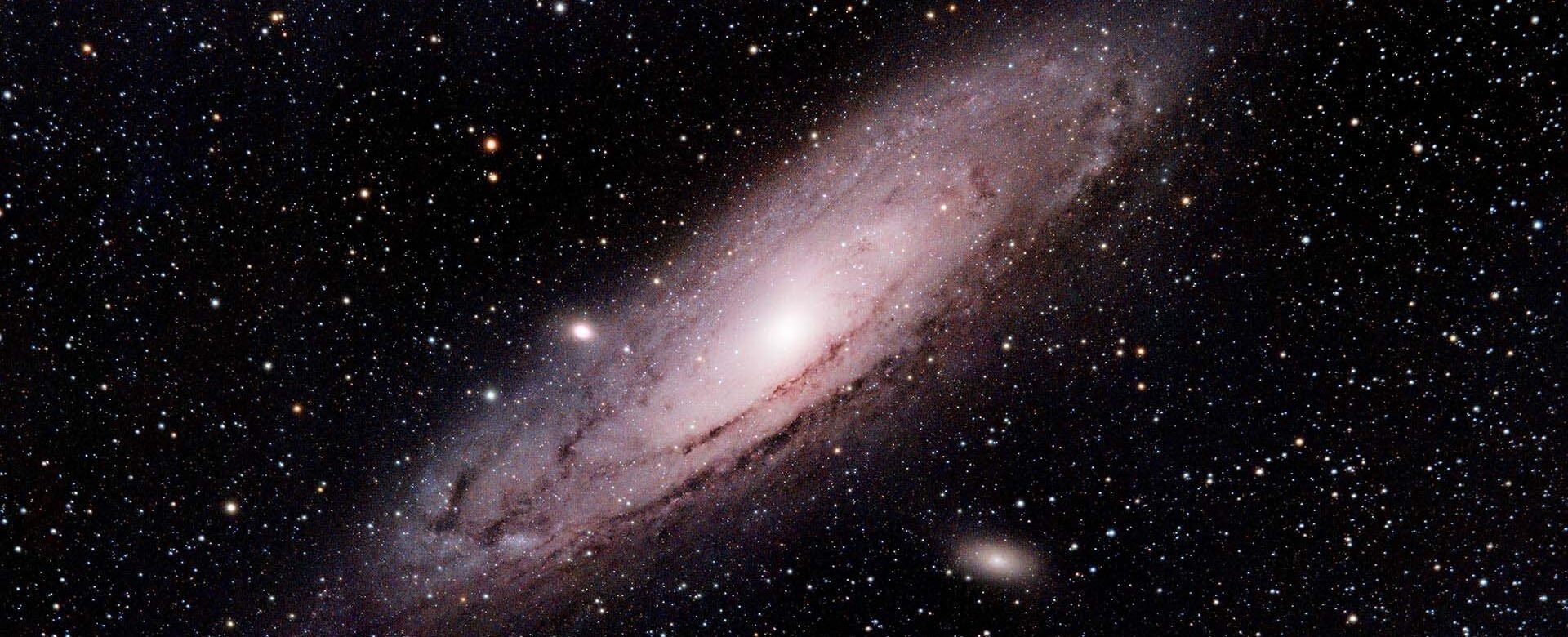“I like to have science videos on in the background sometimes while I write, something usually unrelated to what my lab works on, and I gravitated toward astronomy,” he explains. “Learning about these other fields keeps me excited about science in general instead of getting burned out on one specific topic.”
Borniger found that many of the people he listened to were capturing their own images of deep-space objects like the Andromeda galaxy. “I never realized you could take pictures like that with an amateur setup,” he says. As impressive as NASA’s own astrophotography is, you don’t need NASA-level equipment to take good shots of the night sky. In late 2022, Borniger set his sights on the stars above CSHL campus.

“To do this type of imaging, you need two main things: a camera with a lens of adequate focal length, and a star tracker or equatorial mount,” he says. “The lens will determine how zoomed in the image will be. And the mount corrects for the rotation of the Earth so the image doesn’t come out blurry.”
Both of the pictures seen here were taken from CSHL campus. Despite their clarity, the Laboratory’s location is not quite ideal for astrophotography. Light from New York City creeps into the night sky over Cold Spring Harbor. “But you can cut down on it almost completely with a narrowband filter,” Borniger says. “They’re relatively cheap, and they make it easy to take images from extremely light-polluted places like NYC, or even Tokyo.”

Borniger snapped his first deep-space photo in January 2023. His entire setup cost around $2,000. But, he says, “you can get good results for significantly cheaper. It just requires a little more fiddling around, and I don’t have enough time for all of that!”
That’s because Borniger himself is a rising star. At CSHL, his lab continues to push the frontiers of cancer research. They’re now exploring how to treat tumors with electricity—a revolutionary therapeutic approach.
